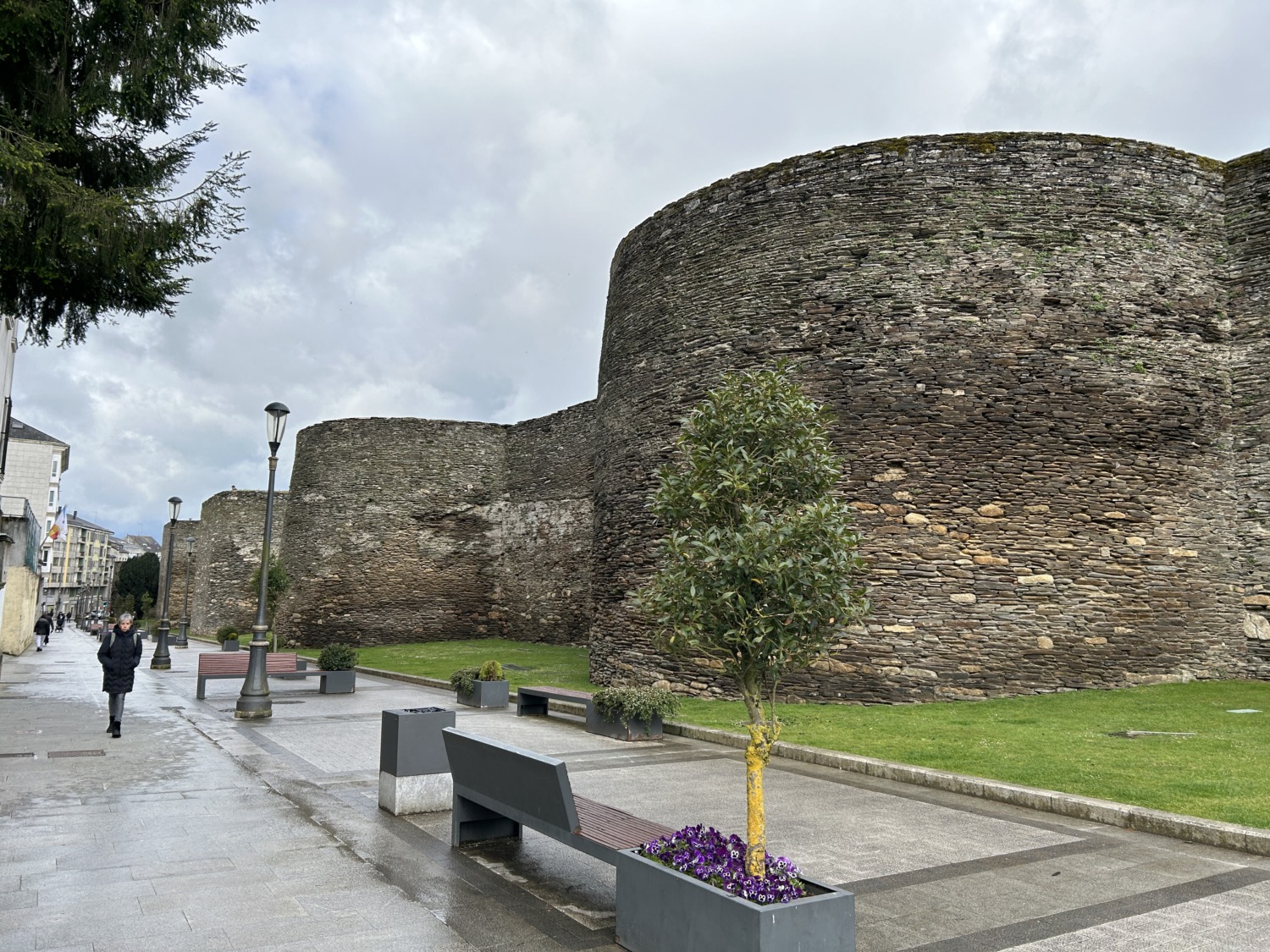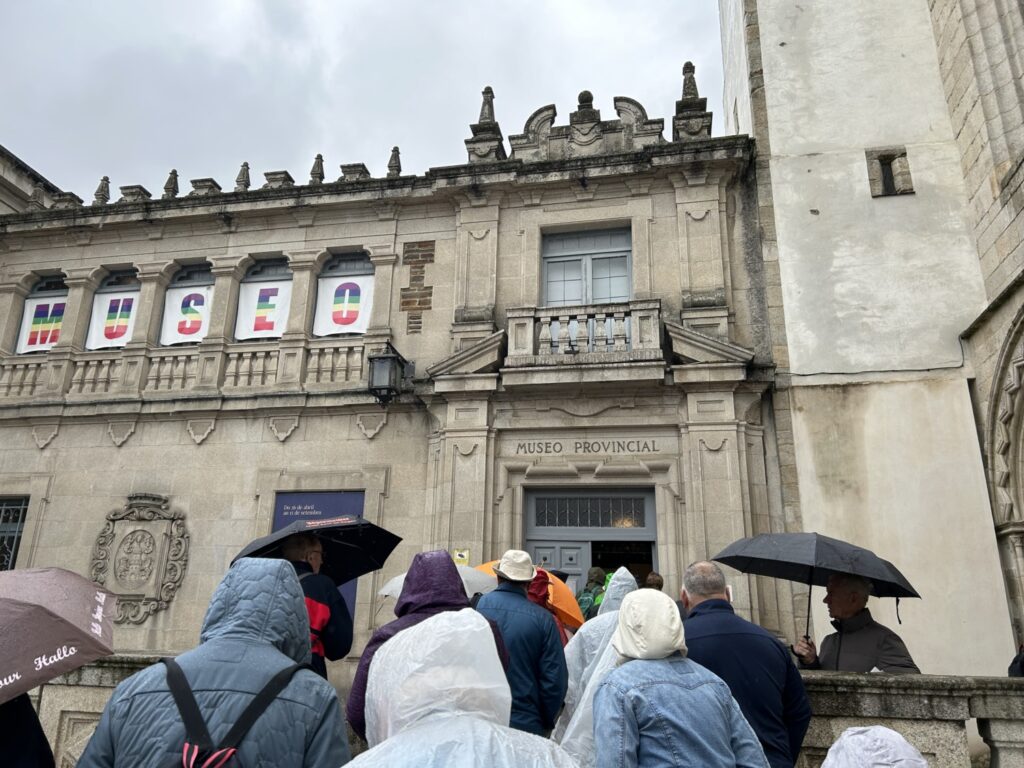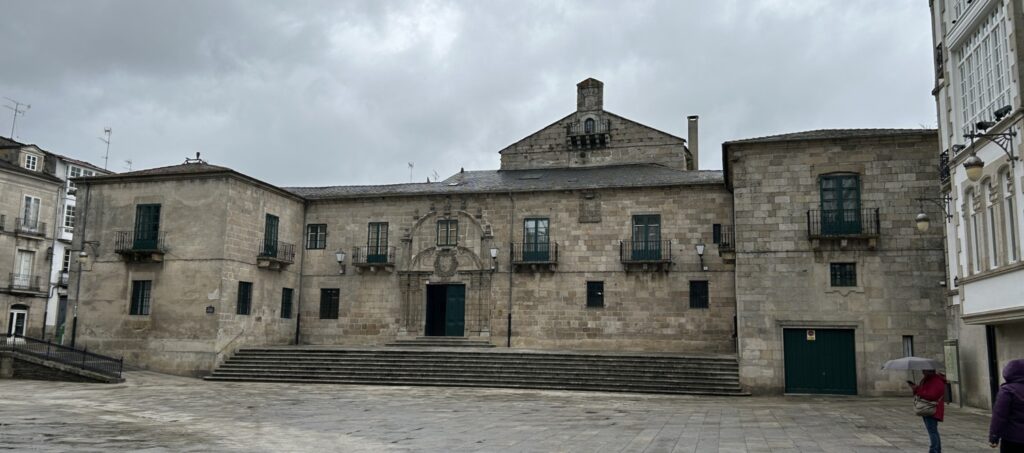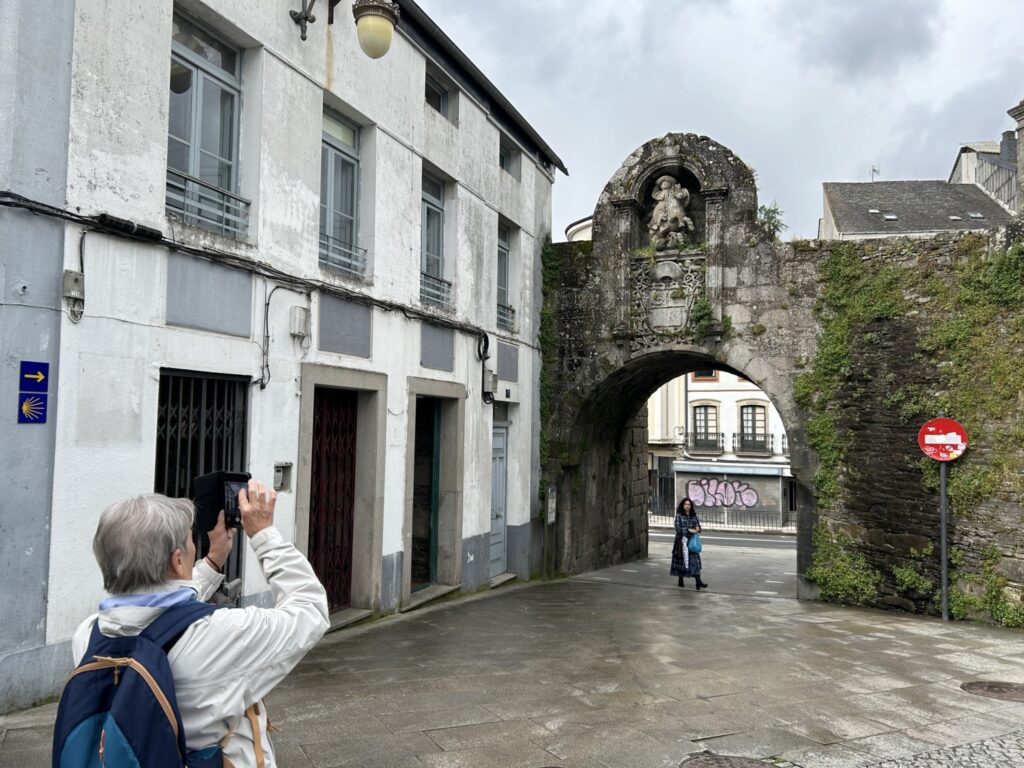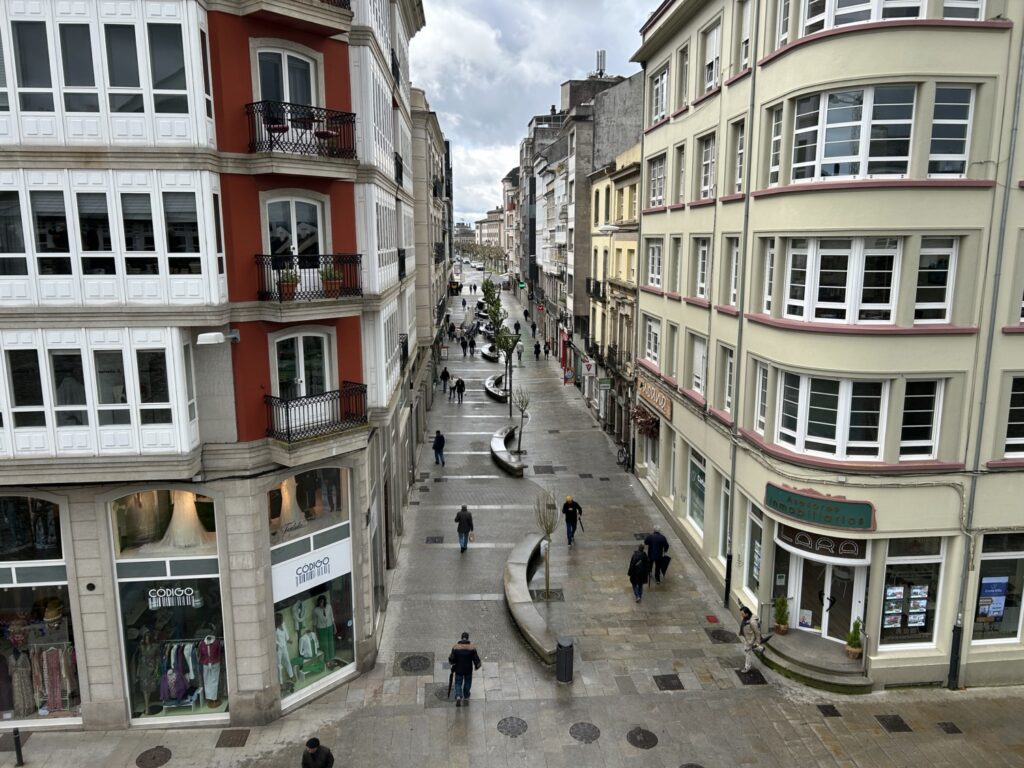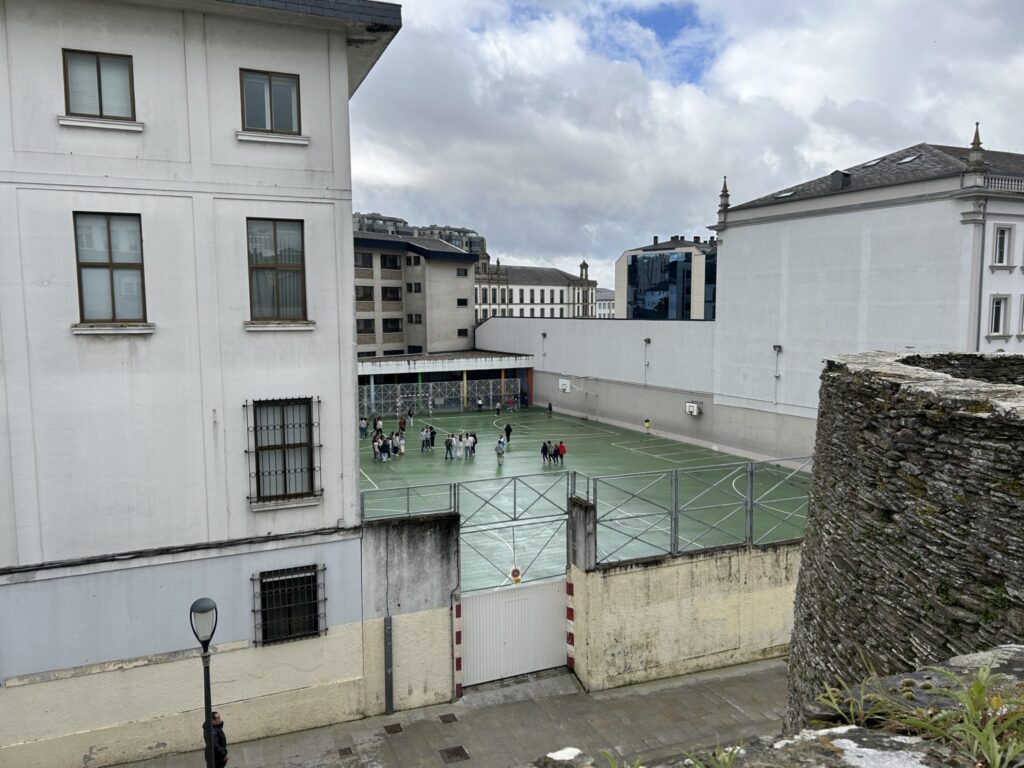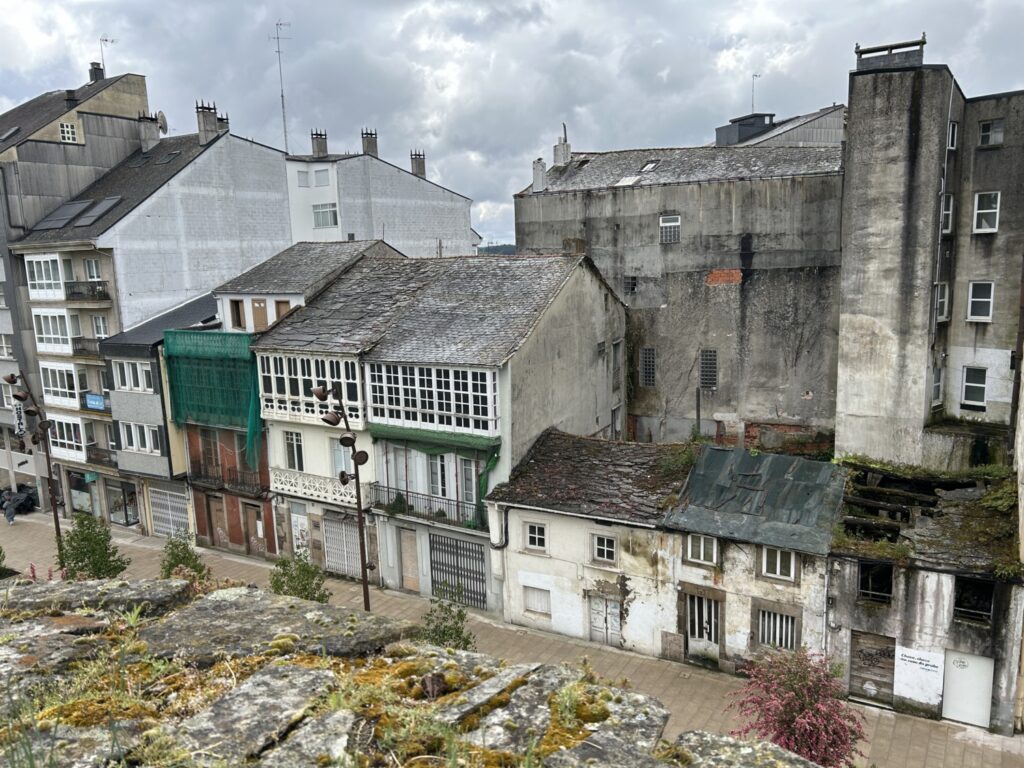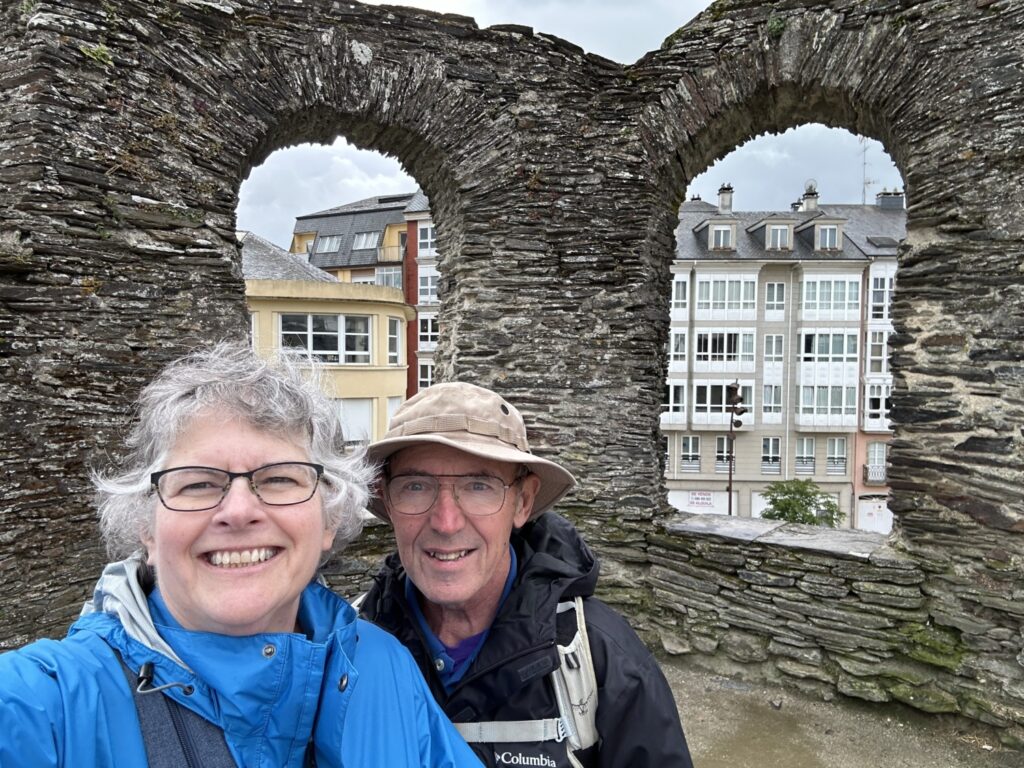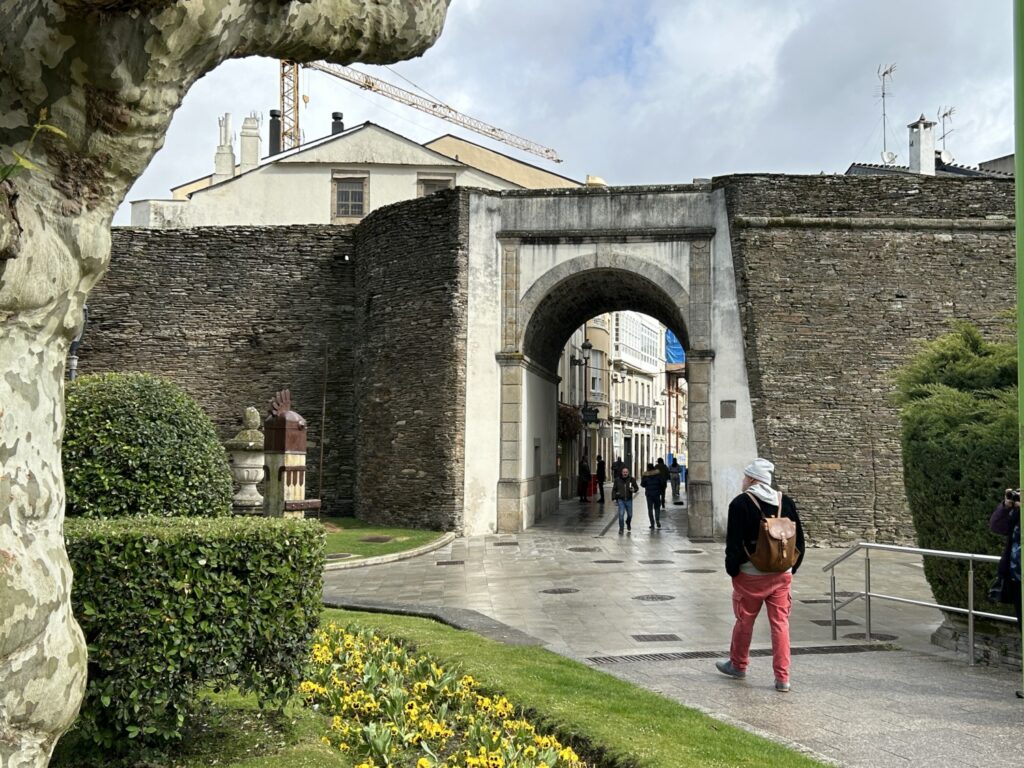Our next port of call was A Coruna, Spain, and Tom and I had a shore excursion to Lugo. A Coruna looked like an interesting place to explore. It had a castle and a Roman lighthouse, but Tom and I wanted to see the Roman Wall in Lugo. Shortly after arriving in A Coruna, we climbed on a bus with 50 of our closest friends and headed to Lugo.
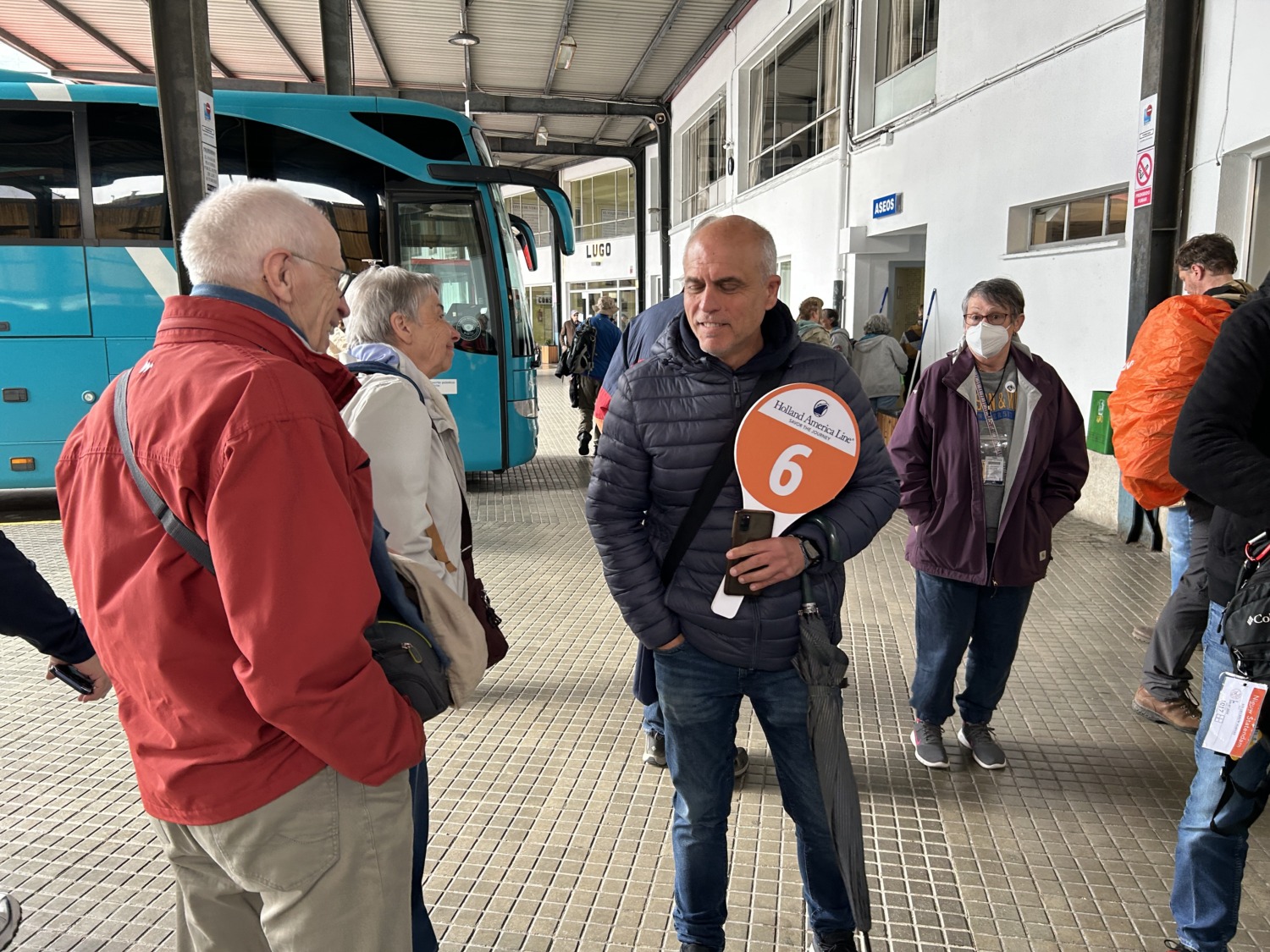
Lugo is a city with about 100,000 people in the region of Galatia on the northwest corner of Spain. As we rode, our tour guide Sergio told us that the rain we were experiencing was normal for the region. He pulled us in with the old line “The rain in Spain stays mainly on the ….” Of course, we all shouted “plain.” But he explained that was wrong. The rain in Spain stays mainly in the north, and Sergio told us that it is often cold and rainy, even in the summer.
When we reached Lugo we got off the bus and pulled on our raingear. It rained off and on most of the time we were in Lugo. It wasn’t the prettiest day to be there, but we didn’t let it dampen our enthusiasm.
Lugo is the only city in the world with an intact Roman Wall encircling it. Of course, the wall only encircles the city center, but the wall is still an impressive sight. The city was established by Augustus Caesar in 15 C.E. The wall was built for defensive purposes in the third century. The wall is 2 km in length with a height of 33 to 49 feet. There are 85 towers and 10 gates. There are five original Roman gates which you can tell by their smaller size. The other five gates have been expanded to allow traffic or easier access to the town center.

The most recent gate enlargement came in 1920 when the Lugo city mayor used dynamite to blast a hole in the wall without asking anyone’s permission. That led to Spain declaring the wall a protected site. In 2000 it was declared a UNESCO World Heritage site. UNESCO says “The entire circuit survives intact and is the finest example of late Roman fortifications in western Europe.”

We walked along the walls for a while, and then headed up some stairs to the top of the wall. You can walk all the way around the city center on the wall and I would have loved to do that. The small part that we walked offered fabulous views of the city and a peek into the lives of the people living in Lugo. On the inside of the wall, homes and shops are built right against the wall. Sergio explained how this was cheaper because people didn’t have to construct one wall. Some of the homes had seen better days and many of the buildings were empty or for sale.
I was absolutely amazed at the age of everything. The city is working to renovate the city center and has (mostly) closed it to vehicles. Outside the walls, the city has put an pedestrian walkway with green spaces to help keep pollution and noise away from the city center. In fact, the noisiest place when we were on the wall was the two schoolyards where kids were at recess. Surrounded by stone, their shouts and laughter echoed off the walls.

Sergio talked about the history of the walls and told us many stories. He also talked about the Camino de Santiago and pointed out the shells that marked the path, as well as some of the pilgrims on the path. We saw the Lugo Cathedral of Santa Maria and the town square at the center of everything. There has been a church continuously in this place since 755, although it has gone through many changes and renovations. The current building was mostly constructed in the 12th century, but a new facade was added after a 1755 earthquake damaged the old facade. Consequently, as you walk around the Cathedral, it looks like many different buildings.

We saw the Bishop’s house and the City Hall. Then we went into the Museo Provincial, which was the former St. Frances Convent. The museum was very interesting because it looked like they took stone artifacts from the city center and just placed them in any order in the convent. We saw sundials, which Sergio commented was ironic because it was sunny so seldom. We also saw carved figures and the original Roman mile marker that had been placed at the center of town.

As we walked around the city center, we also walked over Roman artifacts and excavations. They were dug out, catalogued, and then covered with heavy plexiglass. We saw Roman stairs and rooms in Roman houses. One of the most interesting was a Roman mosaic that looked like a Roman bath. Sergio noted the location next to the Cathedral and told us it was probably a very early baptistry.

Once finished at the Museo, we walked to a restaurant for lunch. It was more of an event center, because they are only open for tour groups and special events. Even though the space was crowded, everyone on our tour was served a lunch of local favorites. We had empanadas, lamb ribs, prosciutto, sausage, and french fries. For dessert we were served a small piece of cake and ice cream.
Because there were so many of us, it took a while for lunch to be served. When we finished, it was time to head back to the bus and back to A Coruna. Tom and I had hoped to walk around A Carona a bit, especially since we had not been able to go in any shops in Lugo. But it was siesta time when we got back and everything was closed. There was one gift shop open in the cruise terminal, but we didn’t see anything we wanted.
We had a wonderful visit to Lugo. Again, it was a city that deserved a longer stay. Tom and I would have loved to walk the entire wall and check out some of the shops trying to make it in the city center. We passed several restaurants where the food looked delicious. But the ship sails on and we want to be sure to be on it.

